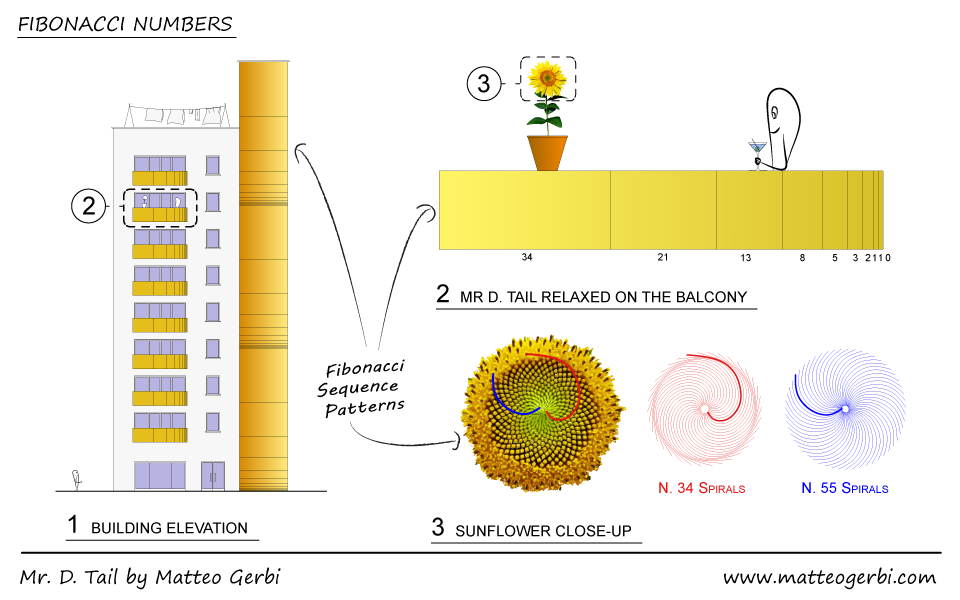Leonardo Bonacci (c. 1170 – c. 1250) or simply Fibonacci
is a mathematician best known to the world for a
number sequence named the Fibonacci numbers.
In mathematics, the Fibonacci numbers form the following
sequence:
0, 1, 1, 2, 3, 5, 8,
13, 21, 34, 55, 89, 144, 233, 377, 610, . . .
This sequence has many properties but the feature characteristic
which defines it is that the first two numbers in the Fibonacci sequence are 0
and 1 and each subsequent number is the sum of the previous two. Ie: the third
number is 0+1=1, the fourth number is 1+1=2, the fifth number is 1+2=3, the sixth
number is 3+2=5 and so on.
The Fibonacci sequence is widely found in nature. As an
example, the number of spirals in both directions formed from the sunflowers seeds
are two consecutive Fibonacci numbers, usually 34 in one direction and 55 in the other. This interesting
behaviour is not just found in sunflower seeds but also of the individual scales
arrangement of pinecones, in the flowering of artichokes, branching of trees
and in the number of petals of many flowers.
Having said that, not surprisingly architects used the
Fibonacci numbers to design many buildings, furthermore this series on numbers is
also found in films, poetry and music.
Back to us, somewhere in a suburban metropolitan area, on a
balcony of a modern building Mr D. Tail is drinking a cocktail while observing the
seeds arrangement of a sunflower head. The Fibonacci sequence it seems to be a
bit everywhere.
More Info about Fibonacci numbers:



No comments:
Post a Comment